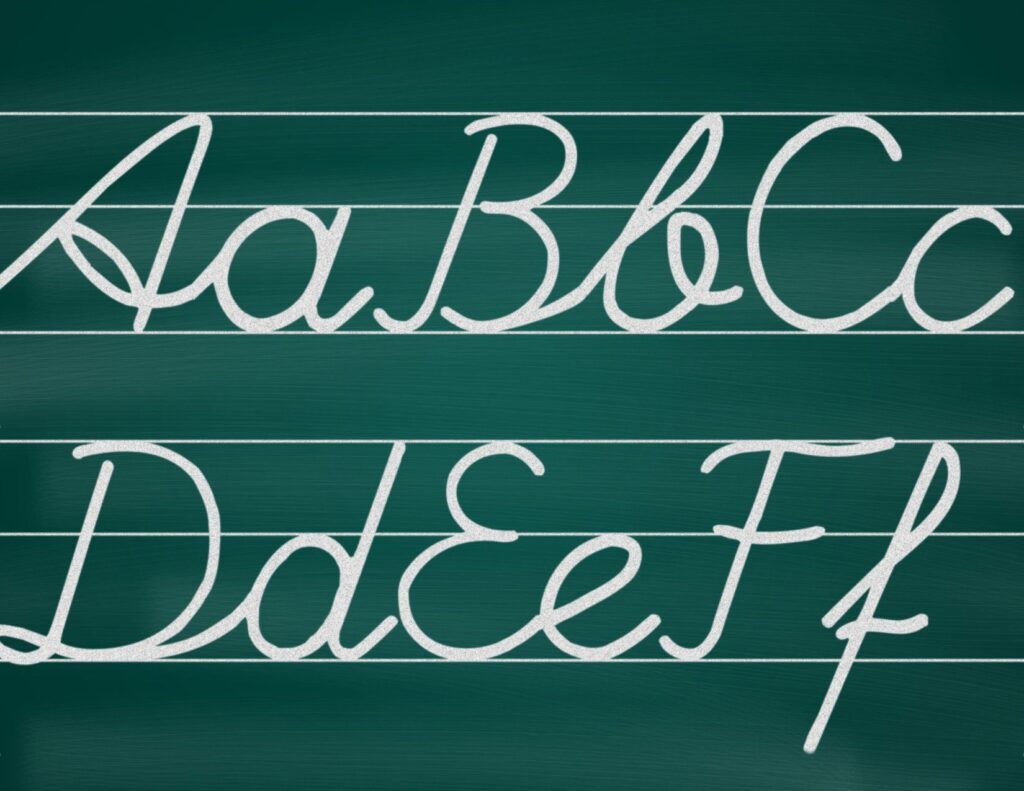Hey there, amazing parents! As an experienced teacher, I understand that helping your children improve their handwriting can be a challenging task, especially when it comes to cursive writing. But fret not! Today, I’m here to share with you everything you need to know about the perfect cursive handwriting notebook that will transform your child’s writing experience. So, let’s dive into the world of elegant cursive handwriting and discover how the right notebook can make a world of difference for your little ones.


Why Cursive Handwriting Matters:
Before we get started, let’s discuss why cursive handwriting is so essential for children aged 8-14 years. In today’s digital age, you might wonder if it’s even necessary. Well, cursive writing offers numerous benefits, including:
- Improved fine motor skills
- Enhanced hand-eye coordination
- Increased creativity and self-expression
- Better focus and concentration
- A sense of accomplishment and pride in their work
Now that we’ve established the importance of cursive handwriting, let’s explore how “The Cursive Handwriting Notebook for Anyone” can help your child achieve these benefits.
Choosing the Perfect Cursive Handwriting Notebook:
When it comes to selecting a cursive handwriting notebook, there are several factors to consider. Here are some key features to look for:
Quality Paper:
A good notebook should have a smooth, high-quality paper that prevents ink bleeding and provides a comfortable writing experience.
Appropriate Line Spacing:
Line spacing is crucial for cursive writing practice. Choose a notebook with lines spaced close enough for your child to connect letters but wide enough to accommodate their developing handwriting skills.
Pre-Printed Cursive Guides:
Look for notebooks that include pre-printed cursive guides, offering examples of uppercase and lowercase letters and sample words or phrases. This feature provides a valuable reference for your child as they practice their cursive handwriting.
Engaging Content and Activities:
To keep your child motivated and interested, opt for a notebook that incorporates fun exercises and prompts, such as writing their name, composing letters, or journaling about their day.
Durable Cover:
A durable cover will protect your child’s work and ensure the notebook withstands daily use.
Introducing ‘How to Write in Cursive for Anyone’ – The Perfect Companion Workbook for Your Child’s Cursive Handwriting Notebook
As you search for the perfect cursive handwriting notebook for your child, don’t forget to check out ‘How to Write in Cursive for Anyone’ by Dover Cliffs Publishing House. This comprehensive workbook is designed by an experienced teacher, making it the ideal resource to supplement your child’s cursive handwriting journey.
Featuring engaging activities, high-quality paper, and a well-structured layout, ‘How to Write in Cursive for Anyone’ provides:
- Thorough practice and understanding of uppercase and lowercase letters
- Word writing exercises for each letter of the alphabet
- Amusing jokes and their answers add a touch of humor to the learning experience
Suitable for all ages and skill levels, this workbook can help learners master the art of cursive writing and experience its numerous benefits, including improved fine motor skills, enhanced hand-eye coordination, increased creativity, and a sense of accomplishment.
Find ‘How to Write in Cursive for Anyone’ on Amazon today and let it be the perfect companion to your child’s cursive handwriting notebook. Happy writing!
Customizing the Notebook for Your Child:
While a well-designed cursive handwriting notebook is essential, customizing it to fit your child’s needs can make it even more effective. Here are some ideas to make the notebook a valuable learning tool for your child:


Personalize the Cover:
Encourage your child to decorate their notebook with stickers, drawings, or a personalized nameplate. This will help them take ownership of their work and make the notebook feel special.
Create a Progress Tracker:
Include a progress tracker or goal-setting page to help your child monitor their improvement and celebrate their achievements.
Offer Incentives:
Create a reward system for consistent practice, such as earning stickers, small treats, or extra screen time. This will motivate your child to keep practicing their cursive handwriting.
Incorporate Feedback:
Regularly review your child’s work and provide constructive feedback, praise, and encouragement. This will boost their confidence and help them identify areas for improvement.
The Learning Process: A Step-by-Step Guide for Parents
Teaching cursive handwriting can be a daunting task, but breaking it down into manageable steps can make the process more enjoyable for both you and your child. Here’s a step-by-step guide to help you along the way:
- Familiarize Yourself with Cursive Writing: Before teaching your child, make sure you’re comfortable with cursive writing yourself. Brush up on letter formations, connections, and common mistakes to ensure you’re well-prepared to guide your child.
- Introduce Cursive Writing: Begin by showing your child examples of cursive writing and explaining its benefits. Make it exciting and engaging by sharing historical facts or stories about famous people with beautiful penmanship.
- Teach Basic Strokes and Letter Formation: Start with basic strokes, such as loops, hooks, and curves. Then, introduce lowercase letters, followed by uppercase letters, ensuring your child understands the correct formation and connection of each letter.
- Practice, Practice, Practice: Encourage your child to practice regularly by setting aside dedicated time each day for cursive writing. Use their cursive handwriting notebook to work on individual letters, connections, and eventually, complete words and sentences.
- Monitor Progress and Adjust as Needed: Regularly review your child’s work to identify areas for improvement and provide tailored guidance. Adjust your teaching approach as needed, ensuring your child remains challenged and engaged.
- Integrate Cursive Writing into Daily Life: Encourage your child to use their cursive writing skills in real-life situations, such as writing thank-you notes, birthday cards, or even grocery lists. This will help them see the value and practicality of their new skill.
- Celebrate Success: Acknowledge your child’s progress and celebrate their achievements, big or small. This will help build their confidence and reinforce the importance of consistent practice.
With the right cursive handwriting notebook and a personalized, step-by-step approach, your child can master the art of elegant cursive writing. Remember, patience, consistency, and encouragement are key to helping your child develop this valuable skill. By providing them with a high-quality notebook and investing time and effort into their learning process, you’ll not only be supporting their academic success but also fostering a sense of pride and accomplishment in their work.
So, go ahead and choose the ultimate cursive handwriting notebook for your child, and embark on this exciting journey together. Happy writing!


1 Comment
Comments are closed.